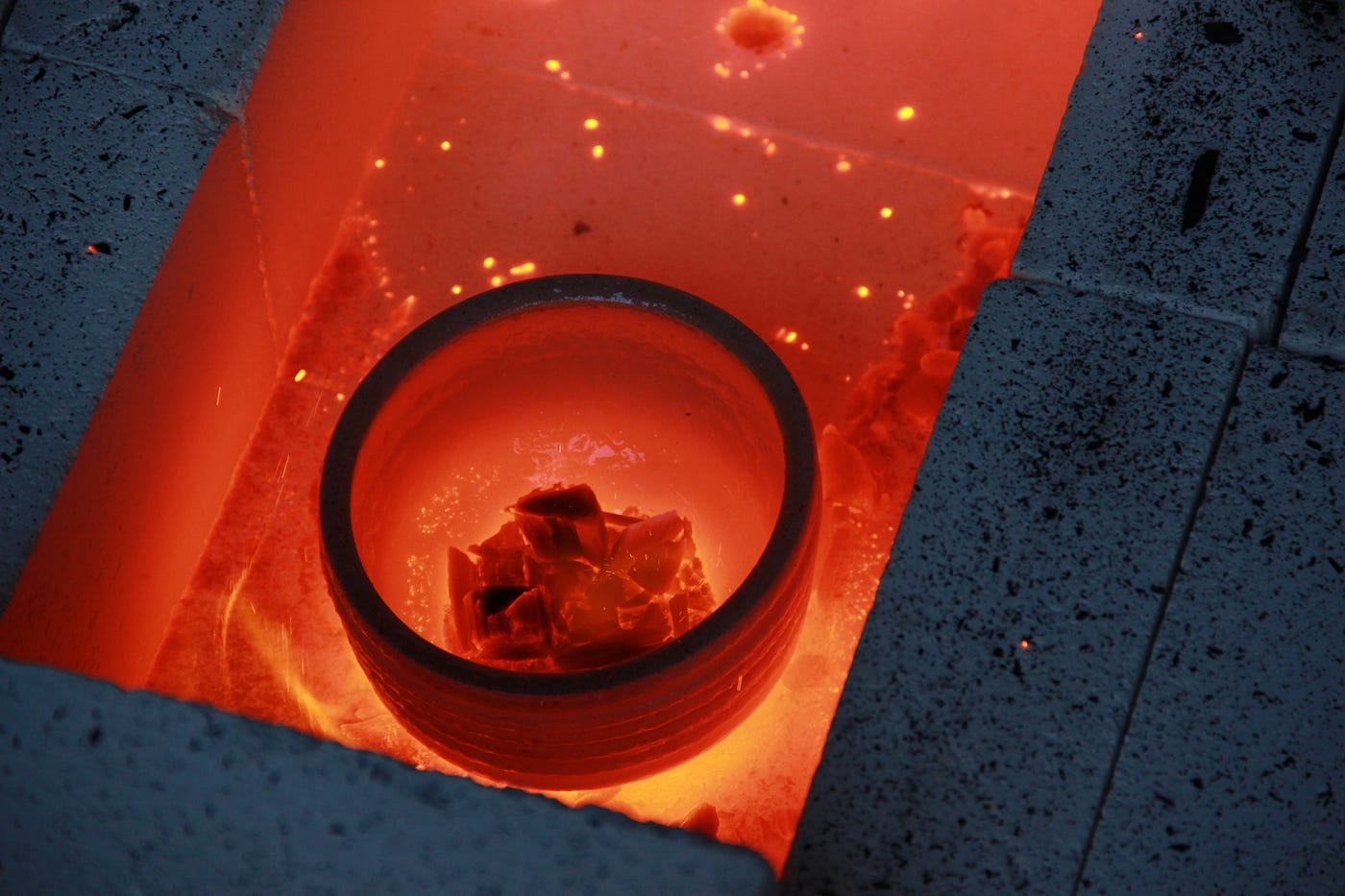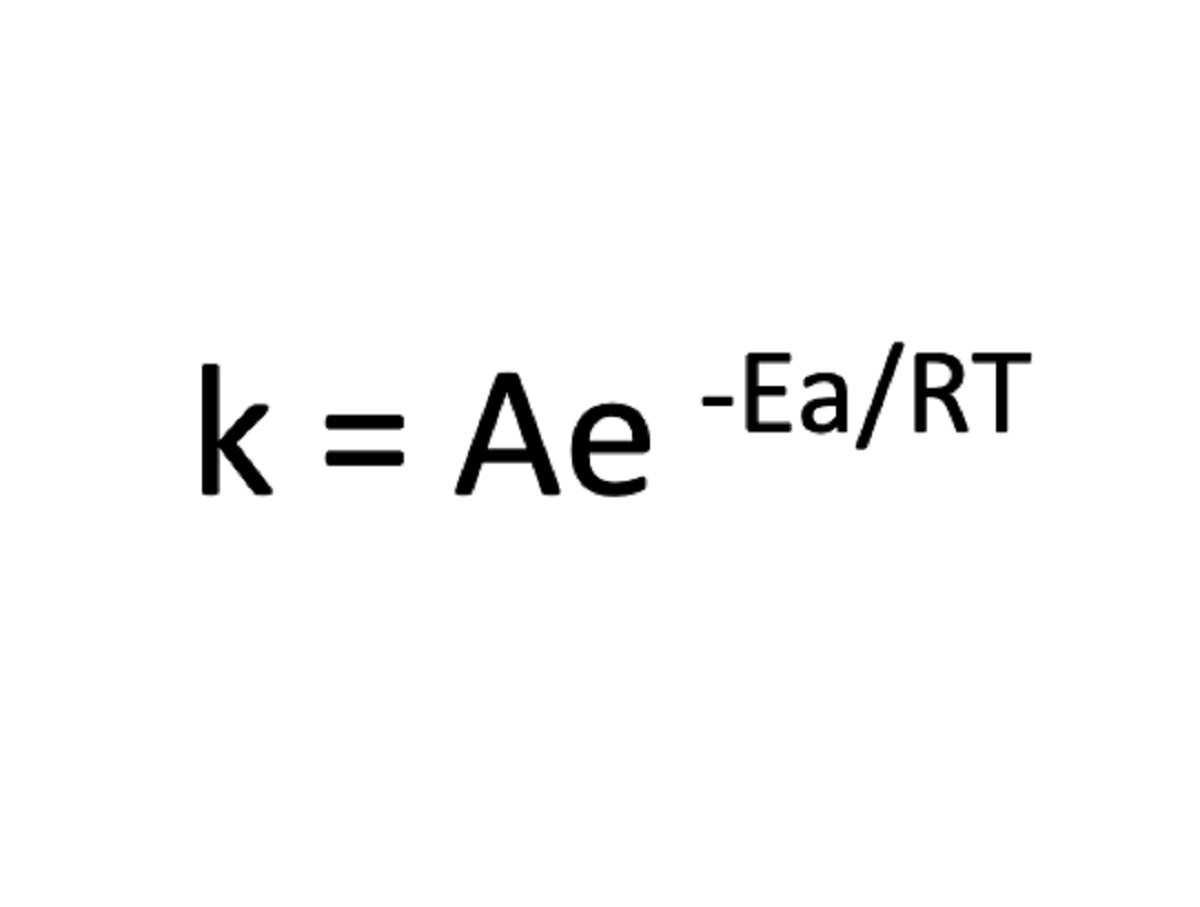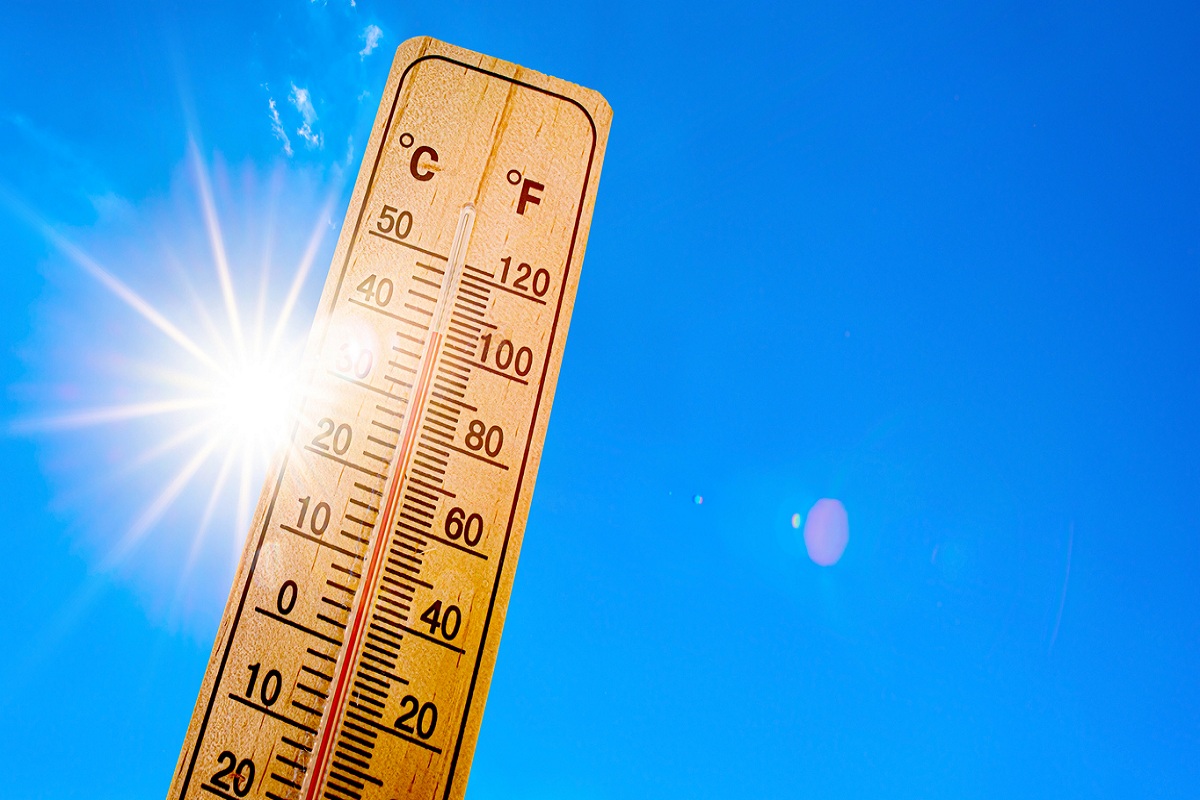Home>Science & Environment>Understanding Heat Transfer: Definition And Examples


Science & Environment
Understanding Heat Transfer: Definition And Examples
Published: February 19, 2024
Learn about heat transfer in science and the environment with clear definitions and practical examples. Understand the principles of conduction, convection, and radiation.
(Many of the links in this article redirect to a specific reviewed product. Your purchase of these products through affiliate links helps to generate commission for Temperatures.com, at no extra cost. Learn more)
Table of Contents
Introduction
Heat transfer is a fundamental concept that plays a crucial role in our daily lives, impacting everything from the weather to the functioning of electronic devices. Understanding the principles of heat transfer is essential for comprehending various natural phenomena and human-made processes. At its core, heat transfer refers to the movement of thermal energy from one object or substance to another due to a temperature difference. This transfer can occur through three primary mechanisms: conduction, convection, and radiation.
In this article, we will delve into the intricacies of heat transfer, exploring its underlying principles and real-world applications. By gaining a deeper understanding of how heat moves and affects the world around us, we can appreciate the significance of this phenomenon in diverse contexts, ranging from cooking and climate control to industrial processes and environmental dynamics.
As we embark on this exploration, it's important to recognize that heat transfer is not only a scientific concept but also a practical consideration in numerous fields. Whether it's the way heat travels through a metal pan on a stove, the circulation of warm air in a room, or the transmission of solar energy through space, heat transfer shapes our experiences and influences the functioning of countless systems.
By unraveling the mysteries of heat transfer, we can gain insights into the mechanisms that govern thermal interactions, paving the way for innovations in energy efficiency, material design, and environmental sustainability. Through this journey, we will uncover the fascinating ways in which heat transfer manifests in our surroundings, from the cozy warmth of a cup of hot cocoa to the intricate dynamics of Earth's climate system.
Join us as we embark on a captivating exploration of heat transfer, unraveling its principles and discovering its profound impact on the world we inhabit. Let's delve into the fascinating realm of thermal energy and its transformative effects, gaining a newfound appreciation for the intricate dance of heat transfer that shapes our everyday experiences.
The Basics of Heat Transfer
Heat transfer is a fundamental process that underpins the behavior of physical systems and the natural world. At its core, heat transfer involves the movement of thermal energy from regions of higher temperature to regions of lower temperature. This transfer occurs through three primary mechanisms: conduction, convection, and radiation.
Conduction
Conduction is the transfer of heat through direct molecular interaction within a material or between different materials in physical contact. When a substance is heated, its molecules gain kinetic energy, leading to increased motion and collisions. This heightened molecular activity enables the transfer of thermal energy from the warmer regions to the cooler regions of the material. Metals, known for their high thermal conductivity, are effective conductors of heat, allowing for efficient transfer within their structures.
Convection
Convection involves the transfer of heat through the movement of fluids, such as liquids and gases. This mechanism relies on the circulation of the fluid, driven by temperature variations. In a typical convection process, warmer fluid expands, becomes less dense, and rises, while cooler fluid descends to replace it, creating a continuous cycle of heat transfer. Convection plays a pivotal role in phenomena like atmospheric circulation, ocean currents, and the heating and cooling of buildings.
Radiation
Radiation is the transfer of heat through electromagnetic waves, such as infrared radiation. Unlike conduction and convection, radiation does not require a material medium for heat transfer, allowing it to propagate through the vacuum of space. Objects emit and absorb thermal radiation based on their temperatures and emissivity. This mechanism is responsible for the transmission of solar energy, the warmth felt from a campfire, and the operation of infrared heaters.
By comprehending the fundamental mechanisms of heat transfer, we can gain a deeper appreciation for the intricate ways in which thermal energy shapes our surroundings. These foundational principles serve as the building blocks for understanding the diverse applications of heat transfer in everyday life, from cooking and climate control to industrial processes and environmental dynamics. As we delve further into specific examples and applications, the profound impact of heat transfer on our world becomes increasingly apparent, highlighting its significance in both natural phenomena and human activities.
Read more: Different Types Of Heat Transfer
Conduction: A Common Example
Conduction, one of the primary mechanisms of heat transfer, is a ubiquitous phenomenon with numerous real-world applications. A common example that vividly illustrates conduction is the process of heating a metal pan on a stove. When the burner is turned on, the bottom of the pan comes into direct contact with the heat source, initiating a chain of thermal interactions within the metal.
As the burner transfers heat to the pan, the metal at the point of contact absorbs this thermal energy. The increased kinetic energy of the metal's molecules leads to heightened vibrational motion, which, in turn, is transmitted to neighboring molecules through collisions. This rapid molecular activity facilitates the transfer of heat from the hot burner to the cooler regions of the pan, gradually raising the temperature of the entire cooking surface.
The efficiency of conduction in metals, such as the pan, is attributed to the close arrangement of their atoms and the free movement of electrons within their structures. This atomic arrangement allows for the rapid propagation of thermal energy, enabling the pan to quickly reach a uniform temperature suitable for cooking.
In this example, the conduction of heat through the metal pan enables the even distribution of thermal energy, ensuring that the food placed on its surface cooks consistently. Moreover, the rapid conduction properties of metals make them indispensable in various applications, from heat exchangers and electrical conductors to cooking utensils and industrial machinery.
Understanding the principles of conduction not only enhances our grasp of everyday phenomena but also informs the design of efficient heat transfer systems. By recognizing the pivotal role of conduction in scenarios as commonplace as cooking, we gain a deeper appreciation for the intricate mechanisms that govern thermal interactions, underscoring the pervasive influence of heat transfer in our lives.
Through the lens of this common example, we glimpse the remarkable efficiency and practical significance of conduction, shedding light on the indispensable role it plays in facilitating thermal processes and enabling the functionality of essential tools and devices.
Convection: How Heat Moves in Fluids
Convection, a fundamental mechanism of heat transfer, plays a pivotal role in the movement of thermal energy within fluids, including liquids and gases. Unlike conduction, which involves the direct transfer of heat through molecular interactions, convection relies on the dynamic circulation of the fluid medium to facilitate the exchange of thermal energy.
A classic example that vividly illustrates convection is the heating of a pot of water on a stovetop. As the burner applies heat to the base of the pot, the water in direct contact with the heated surface absorbs thermal energy, leading to an increase in temperature. This localized heating causes the water molecules near the bottom of the pot to become energized, leading to expansion and a decrease in density. As a result, the warmer and less dense water rises while the cooler, denser water descends to take its place, creating a continuous cycle of fluid movement.
This upward movement of warm fluid and downward flow of cooler fluid establish a convection current within the pot, effectively distributing the heat throughout the water. As the process continues, the entire volume of water experiences a gradual increase in temperature, eventually reaching a uniform, elevated state.
The significance of convection extends beyond the kitchen, influencing diverse natural phenomena and human activities. In the Earth's atmosphere, for instance, convection drives the formation of clouds, the circulation of air masses, and the development of weather patterns. The convective motion of magma within the Earth's mantle also contributes to geological processes, including the movement of tectonic plates and the generation of volcanic activity.
In engineering and technology, convection is harnessed for applications such as the design of heat exchangers, the cooling of electronic components, and the operation of HVAC (heating, ventilation, and air conditioning) systems. By leveraging the principles of convection, engineers and designers can optimize the transfer of thermal energy, enhance the efficiency of heat exchange processes, and ensure the effective management of temperature-sensitive systems.
By comprehending the intricate dynamics of convection, we gain a deeper appreciation for the role of fluid motion in shaping thermal interactions. The pervasive influence of convection in natural phenomena and technological innovations underscores its significance as a fundamental mechanism of heat transfer, enriching our understanding of the complex interplay between heat, fluids, and the world around us.
Radiation: The Transfer of Heat through Electromagnetic Waves
Radiation, as a mechanism of heat transfer, operates through the propagation of electromagnetic waves, particularly in the form of infrared radiation. Unlike conduction and convection, which require a material medium for heat transfer, radiation can occur through the vacuum of space, making it a crucial mode of thermal energy transmission in various contexts.
At the heart of radiation-based heat transfer lies the fundamental principle of electromagnetic waves. When an object is heated, it emits thermal radiation in the form of electromagnetic waves, with the intensity and wavelength distribution determined by its temperature and emissivity. This emitted radiation carries thermal energy and can be absorbed by other objects, leading to an increase in their temperature.
The transfer of solar energy from the Sun to the Earth provides a compelling illustration of radiation's impact on our planet. The Sun emits vast amounts of electromagnetic radiation, including visible light and infrared radiation. As this radiation travels through the vacuum of space, it reaches the Earth, where a portion of it is absorbed by the atmosphere and the planet's surface. This absorbed solar radiation plays a pivotal role in driving Earth's climate system, influencing temperature patterns, atmospheric circulation, and the dynamics of ecosystems.
In everyday life, radiation-based heat transfer manifests in numerous scenarios, from the warmth felt from a glowing fireplace to the operation of infrared heaters and the functioning of thermal imaging devices. The ability of thermal radiation to propagate through space without the need for a material medium makes it a valuable tool for applications such as space heating, remote sensing, and medical diagnostics.
Moreover, the principles of radiation are integral to the design of solar energy systems, where photovoltaic cells and solar thermal collectors harness solar radiation to generate electricity and heat water for residential and industrial use. By leveraging the transformative potential of radiation-based heat transfer, these technologies contribute to the advancement of sustainable energy solutions, reducing reliance on fossil fuels and mitigating environmental impact.
By delving into the intricate mechanisms of radiation-based heat transfer, we gain a profound understanding of its far-reaching implications, from shaping Earth's climate dynamics to enabling innovative technologies that harness solar energy. The pervasive influence of radiation underscores its significance as a fundamental mode of heat transfer, enriching our comprehension of the intricate interplay between electromagnetic waves, thermal energy, and the diverse phenomena that define our world.
Applications of Heat Transfer in Everyday Life
Heat transfer plays a pivotal role in shaping numerous aspects of our daily experiences, with its influence extending across a wide array of applications that profoundly impact our lives. From the warmth of a morning cup of coffee to the efficient functioning of electronic devices, the principles of heat transfer are intricately woven into the fabric of everyday life.
In the realm of culinary arts, heat transfer is a fundamental element in the cooking process, influencing the preparation of a diverse range of dishes. Whether it's the conduction of heat through a metal pan to sear a succulent steak, the convection-driven baking of pastries in an oven, or the radiant heat from a grill imparting a smoky flavor to barbecued delicacies, the mechanisms of heat transfer are at the heart of culinary creativity. Moreover, the principles of heat transfer guide the design and operation of kitchen appliances, such as stovetops, ovens, and microwaves, ensuring precise and efficient cooking experiences.
In the realm of climate control, heat transfer mechanisms are harnessed to maintain comfortable indoor environments and optimize energy efficiency. Heating, ventilation, and air conditioning (HVAC) systems leverage convection and conduction to regulate temperature, circulate air, and manage humidity levels within residential, commercial, and industrial spaces. Additionally, insulation materials and building design considerations are informed by the principles of heat transfer, enabling the creation of thermally efficient structures that minimize energy consumption and enhance occupant comfort.
The field of consumer electronics also relies heavily on the principles of heat transfer to ensure the reliable and efficient operation of devices. From smartphones and laptops to refrigerators and televisions, effective heat dissipation is essential for preventing overheating and preserving the longevity of electronic components. Engineers and designers employ thermal management strategies, including conduction-based heat sinks, convection-driven cooling systems, and radiation-based thermal insulation, to mitigate heat buildup and maintain optimal operating conditions for electronic devices.
Furthermore, the principles of heat transfer find application in the realm of sustainable energy technologies, where solar thermal systems harness radiation to generate heat for water heating and space heating. The utilization of heat transfer mechanisms in solar collectors and thermal storage systems contributes to the advancement of renewable energy solutions, reducing reliance on conventional fossil fuel-based heating methods and mitigating environmental impact.
By recognizing the pervasive influence of heat transfer in everyday life, we gain a deeper appreciation for its multifaceted applications, from enhancing culinary experiences and optimizing indoor comfort to enabling the seamless operation of electronic devices and driving the transition toward sustainable energy solutions. The profound impact of heat transfer on diverse facets of daily living underscores its significance as a fundamental phenomenon that shapes our interactions with the world around us.
Conclusion
In conclusion, the exploration of heat transfer has unveiled the intricate mechanisms that govern the movement of thermal energy and its profound impact on the natural world and human activities. From the fundamental principles of conduction, convection, and radiation to the diverse applications of heat transfer in everyday life, our journey has illuminated the pervasive influence of thermal interactions in shaping our experiences and the functionality of essential systems.
By delving into the realm of conduction, we gained insights into the efficient transfer of heat through direct molecular interactions, exemplified by the ubiquitous process of heating a metal pan on a stove. This common example vividly illustrated the remarkable efficiency of conduction in facilitating thermal processes and enabling the uniform cooking of food, underscoring its indispensable role in everyday culinary experiences and industrial applications.
The exploration of convection provided a deeper understanding of how heat moves within fluids, driving phenomena such as atmospheric circulation and the operation of HVAC systems. The dynamic interplay of warm and cool fluid motion within a pot of heated water exemplified the transformative effects of convection, highlighting its significance in natural processes and technological innovations that rely on fluid dynamics for efficient heat transfer.
Furthermore, our examination of radiation-based heat transfer shed light on the far-reaching implications of electromagnetic wave propagation, from influencing Earth's climate dynamics to enabling the design of solar energy systems. The transfer of solar radiation and the utilization of thermal imaging technologies exemplified the diverse applications of radiation in harnessing solar energy and facilitating innovative solutions for sustainable energy generation.
In the realm of everyday life, the multifaceted applications of heat transfer emerged as a central theme, encompassing culinary arts, climate control, consumer electronics, and sustainable energy technologies. The pervasive influence of heat transfer in these domains underscored its significance as a fundamental phenomenon that shapes our interactions with the world, enriching our experiences and driving advancements in energy efficiency and environmental sustainability.
As we conclude this exploration, we recognize the profound implications of heat transfer in shaping our understanding of the natural world and informing the design of technologies that enhance our lives. By unraveling the mysteries of thermal energy and its transformative effects, we have gained a newfound appreciation for the intricate dance of heat transfer that permeates our surroundings, underscoring its significance as a fundamental process that shapes our experiences and drives innovation across diverse fields.













